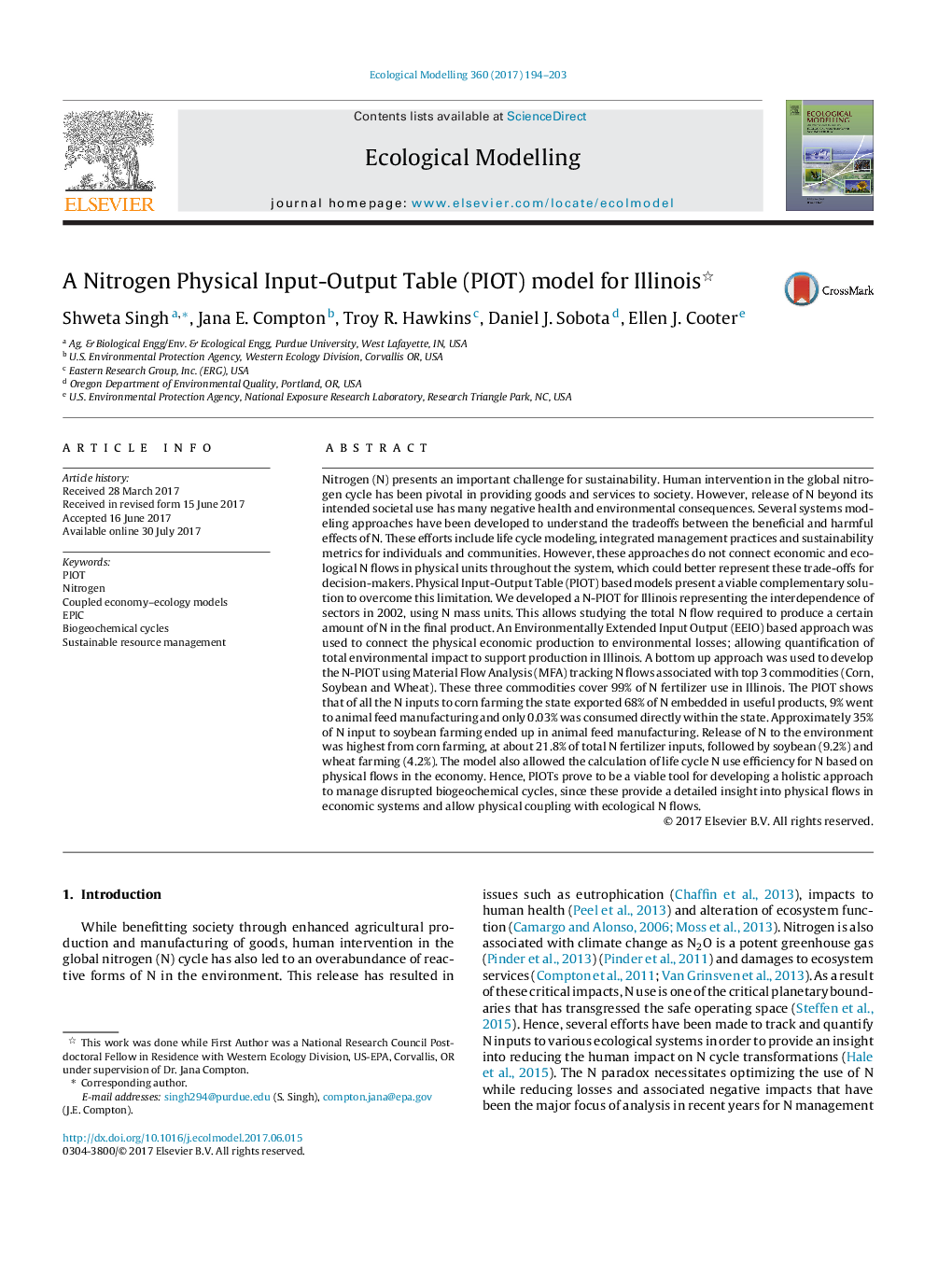| کد مقاله | کد نشریه | سال انتشار | مقاله انگلیسی | نسخه تمام متن |
|---|---|---|---|---|
| 5742059 | 1617387 | 2017 | 10 صفحه PDF | دانلود رایگان |

- A first Physical Input-Output Table (PIOT) based model for Nitrogen (N) flows in Illinois Economy is developed.
- PIOTs provide a comprehensive view of resource flows in the economy using mass flows, similar to physical flow models of ecosystems.
- N-PIOT enables the physical coupling of economic-ecological systems to study the integrated N cycle for better management.
- N Flows associated with major crops of Corn, Soybean and Wheat in the Illinois economy have been used for PIOT development, in this work.
- N-PIOT provide insights to improve Nitrogen Use Efficiency in the economy while reducing the environmental impact due to N losses.
Nitrogen (N) presents an important challenge for sustainability. Human intervention in the global nitrogen cycle has been pivotal in providing goods and services to society. However, release of N beyond its intended societal use has many negative health and environmental consequences. Several systems modeling approaches have been developed to understand the tradeoffs between the beneficial and harmful effects of N. These efforts include life cycle modeling, integrated management practices and sustainability metrics for individuals and communities. However, these approaches do not connect economic and ecological N flows in physical units throughout the system, which could better represent these trade-offs for decision-makers. Physical Input-Output Table (PIOT) based models present a viable complementary solution to overcome this limitation. We developed a N-PIOT for Illinois representing the interdependence of sectors in 2002, using N mass units. This allows studying the total N flow required to produce a certain amount of N in the final product. An Environmentally Extended Input Output (EEIO) based approach was used to connect the physical economic production to environmental losses; allowing quantification of total environmental impact to support production in Illinois. A bottom up approach was used to develop the N-PIOT using Material Flow Analysis (MFA) tracking N flows associated with top 3 commodities (Corn, Soybean and Wheat). These three commodities cover 99% of N fertilizer use in Illinois. The PIOT shows that of all the N inputs to corn farming the state exported 68% of N embedded in useful products, 9% went to animal feed manufacturing and only 0.03% was consumed directly within the state. Approximately 35% of N input to soybean farming ended up in animal feed manufacturing. Release of N to the environment was highest from corn farming, at about 21.8% of total N fertilizer inputs, followed by soybean (9.2%) and wheat farming (4.2%). The model also allowed the calculation of life cycle N use efficiency for N based on physical flows in the economy. Hence, PIOTs prove to be a viable tool for developing a holistic approach to manage disrupted biogeochemical cycles, since these provide a detailed insight into physical flows in economic systems and allow physical coupling with ecological N flows.
Journal: Ecological Modelling - Volume 360, 24 September 2017, Pages 194-203